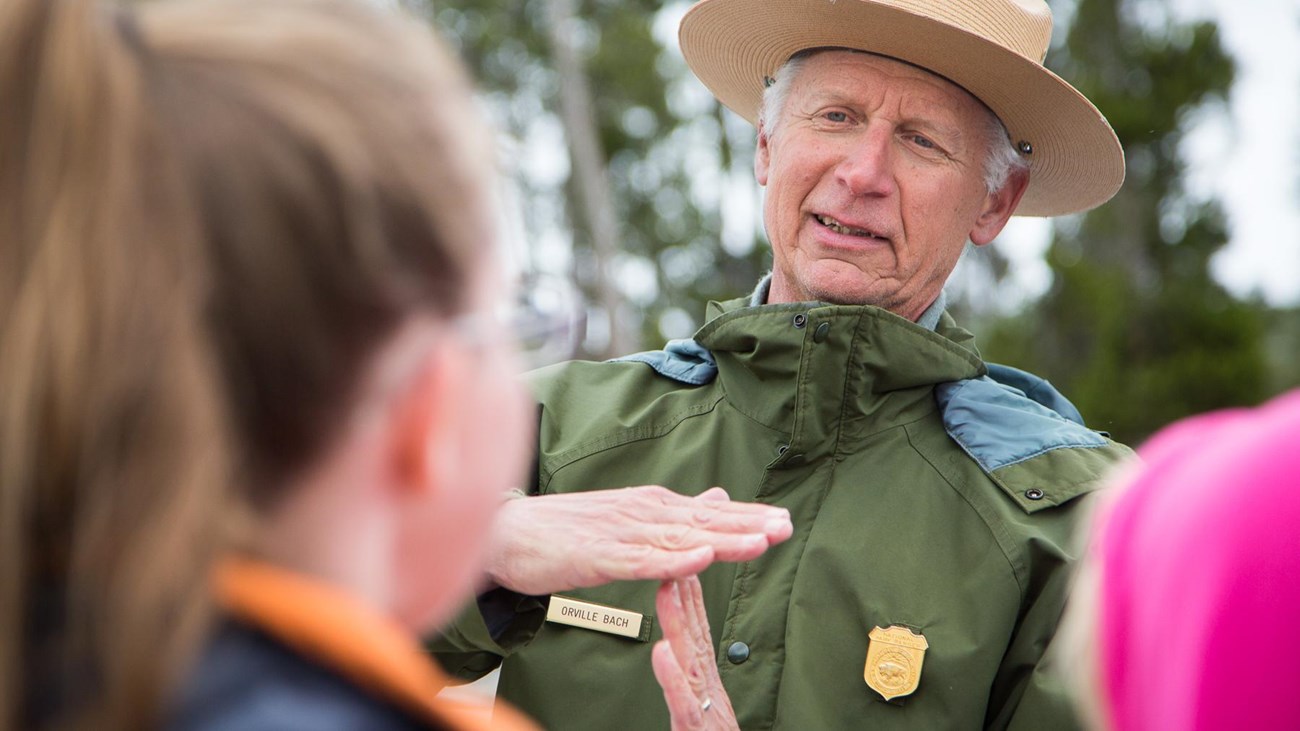- Yellowstone National Park was established on March 1, 1872.
- Yellowstone is the world’s first national park.
No area figures have been scientifically verified. Efforts to confirm the park’s total area continue.
- 3,472 square miles (8,991 km2)
- 2,221,766 acres or 899,116 hectares.
- 63 air miles north to south (102 km)
- 54 air miles east to west (87 km)
- 96% in Wyoming, 3% in Montana, 1% in Idaho
- Highest Point: 11,358 feet (3,462 m; Eagle Peak)
- Lowest Point: 5,282 feet (1,610 m; Reese Creek)
- Larger than Rhode Island and Delaware combined
- About 5% covered by water; 15% by grassland; and 80% by forests
Annual precipitation ranges from 10 inches (26 cm) at the north boundary to 80 inches (205 cm) in the southwest corner. Learn more about weather in Yellowstone.
- Record High: 99ºF (37ºC), 2002 (Mammoth Hot Springs)
- Record Low: -66ºF (-54ºC), 1933 (West Entrance, Riverside Station).
- Average daily at Mammoth Hot Springs: January: 9ºF (-13ºC); July: 80ºF (27ºC)
- Learn more about weather in Yellowstone.
- Elevation: 7,733 feet above sea level
- 131.7 square miles of surface area (341.1 km2)
- 141 miles of shoreline (227 km)
- 20 miles north to south (32 km)
- 14 miles east to west (22 km)
- Average depth: 138 feet (42 m)
- Maximum depth: 430 feet (131 m)
- Learn more about Yellowstone Lake
- The park sits on top of an active volcano.
- One of the world’s largest calderas at 45 x 30 miles (72 x 48 km)
- 1,000–3,000 earthquakes annually
- More than 10,000 hydrothermal features
- More than 500 active geysers (more than half the world's geysers)
- About 290 waterfalls
- Tallest waterfall near a road: Lower Falls of the Yellowstone River at 308 feet (94 m)
- 67 species of mammals, including seven species of native ungulates and two species of bear
- Approx. 330 species of birds (150 nesting)
- 16 species of fish (five nonnative)
- More than seven aquatic invasive species (three having significant detrimental effect)
- Five species of amphibians
- Six species of reptiles
- Two threatened species: Canada lynx, grizzly bears
- 27 associated Native American tribes
- More than 1,800 known archeological sites
- More than 300 ethnographic resources (animals, plants, sites)
- 25 sites, landmarks, and districts on the National Register of Historic Places; many more eligible for listing
- One National Historic Trail (Nez Perce)
- More than 840 historic buildings
- More than 1,000,000 museum items, including 30 historic vehicles
- Millions of archived documents
- More than 20,000 books (many rare), manuscripts, periodicals
National Park Service (2024)
- Total during summer: 748
- Permanent: 392
- Term (variable duration): 4
- Seasonal: 356
Concessioners
About 3,200 people work for concessioners in Yellowstone at summer peak.
Fiscal Year 2024 (in millions)
Total: $128.1
Federal Funding: $94.7
- Operations and staff (base): $39.8
- Wildland Fire: $1.4
- Other Appropriations: $3.2
Other Funding: $33.4
- Donations and Grants: $2.1
- Fees: $24.8
- Utilities & Agreements (Reimbursable): $6.5
Distribution of Budget
Park Support: 11% Includes human resources, contracting, budget and finance, partnerships, telecommunications, and information technology.
Facility Operations and Maintenance: 58% Includes utilities, roads, trails, structures, historic preservation coordination, construction management.
Park Protection: 14% Includes law enforcement, emergency medical services, search and rescue, entrance station operations, structural fre activities.
Resource Stewardship: 11% Includes management operations and monitoring of natural and cultural resources, invasive species management, research coordination.
Visitor Services: 6% Includes interpretation and education, and park concessions management.
The park recorded 4.74 million visits in 2024, up 44% from 2022, during which historic floods disrupted public access to sections of the park. Detailed park visitation information is available at NPS Stats.
Top 10 Visitation Years
1. 2021: 4,860,242
2. 2024: 4,744,353
3. 2023: 4,501,382
4. 2016: 4,257,177
5. 2017: 4,116,524
6. 2018: 4,115,000
7. 2015: 4,097,710
8. 2019: 4,020,287
9. 2020: 3,806,306
10. 2010: 3,640,185

FAQs
Read answers to many frequently asked questions.
|

